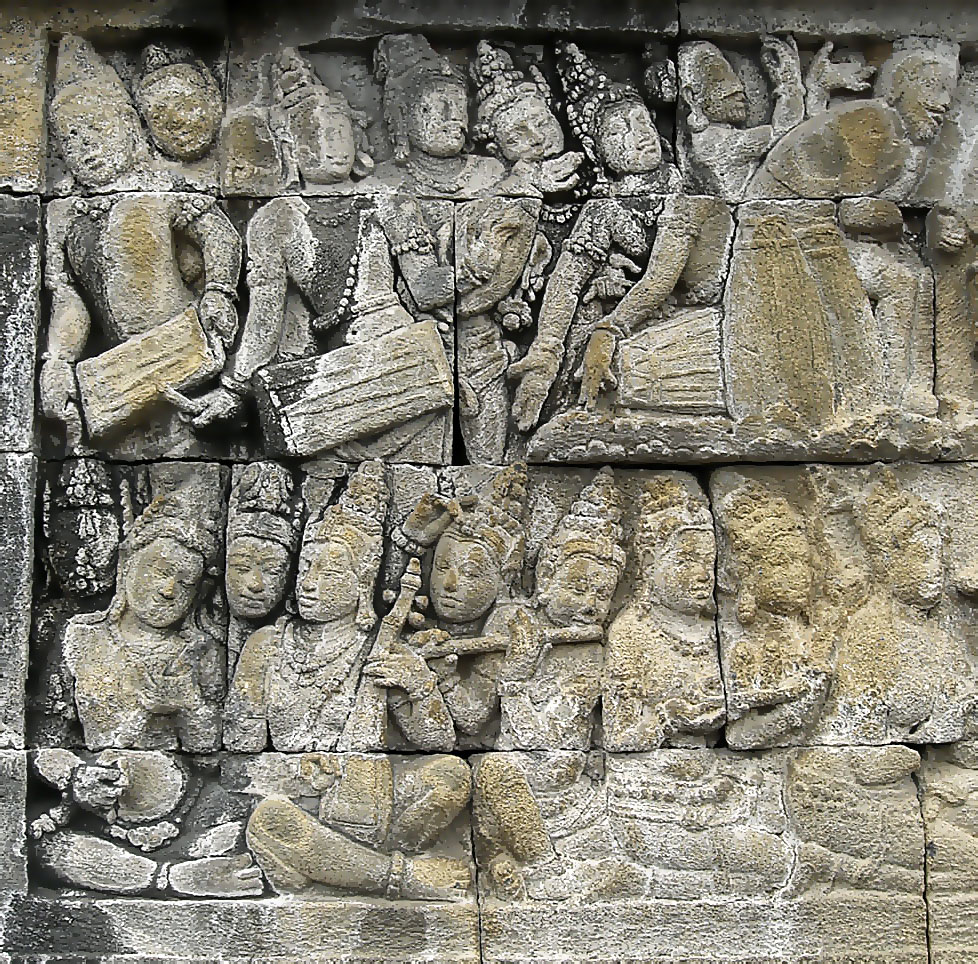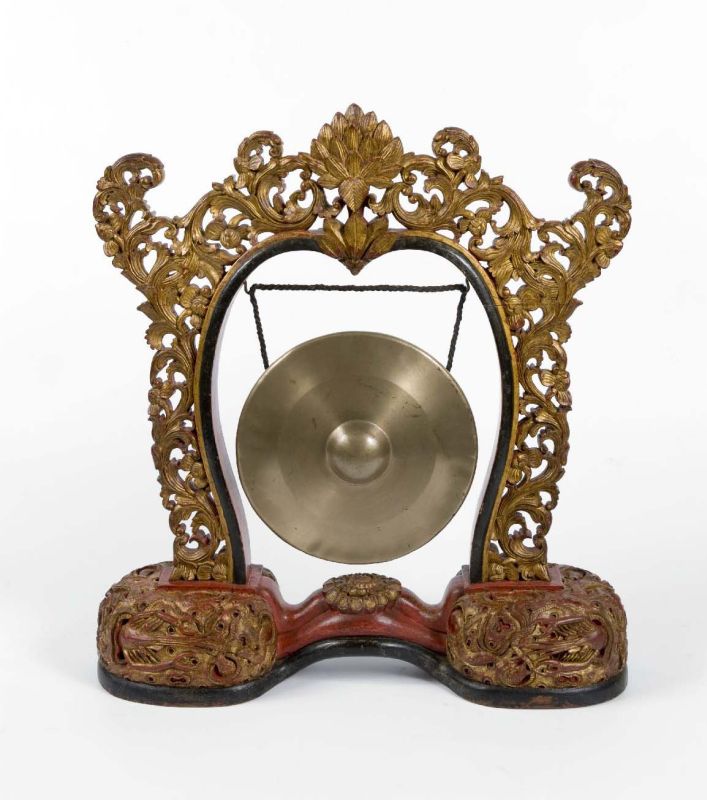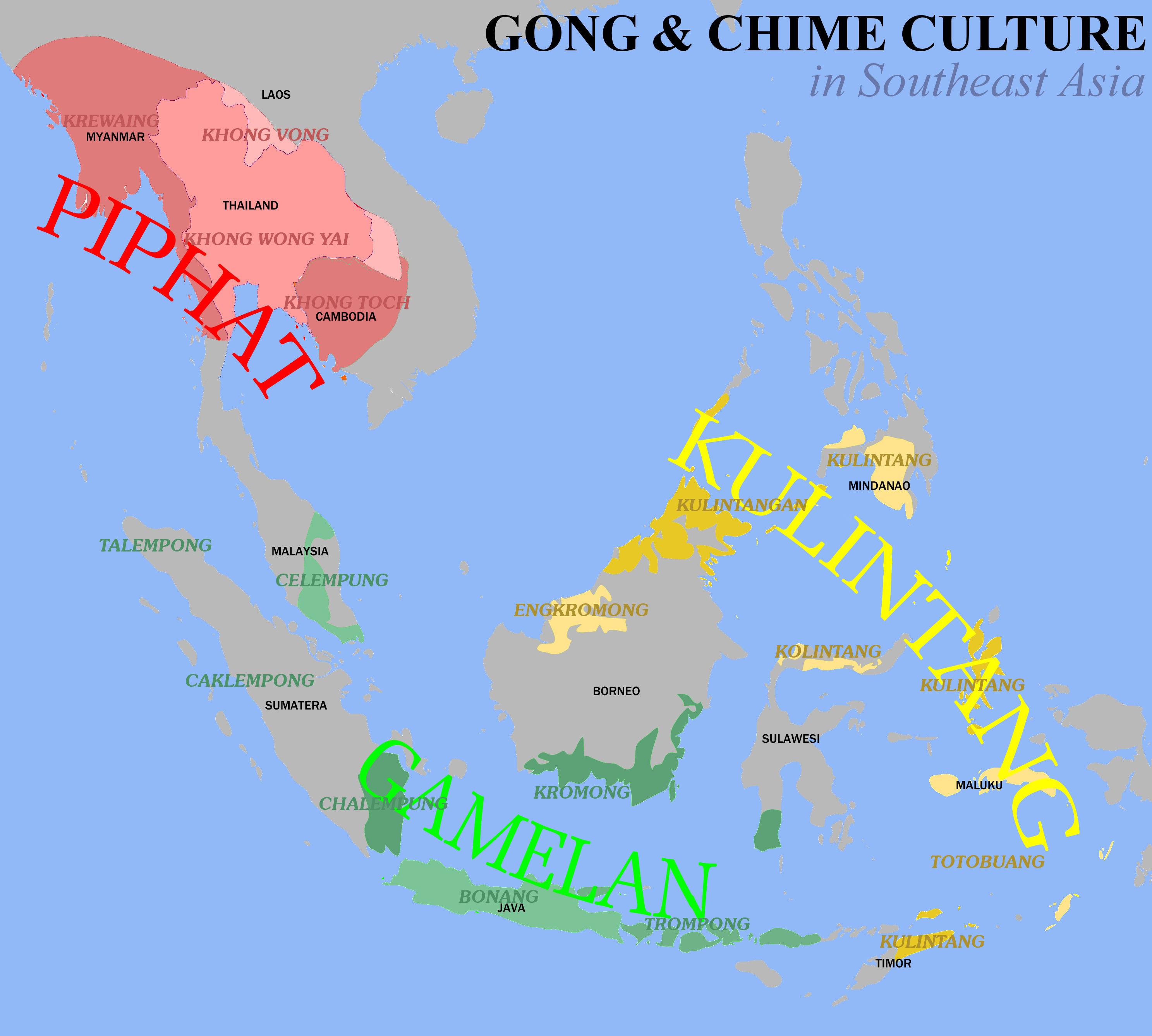|
Kulintang
Kulintang (, ) is a modern term for an ancient instrumental form of music composed on a row of small, horizontally laid gongs that function melodically, accompanied by larger, suspended gongs and drums. As part of the larger gong-chime culture of Southeast Asia, kulintang music ensembles have been playing for many centuries in regions of the Mindanao, Southern Philippines, East Malaysia, Eastern Malaysia, Regions of Indonesia#Eastern Indonesia, Eastern Indonesia, Brunei and Timor, Kulintang evolved from a simple native signaling tradition, and developed into its present form with the incorporation of knobbed gongs from Sundanese people in Java Island, Indonesia. Its importance stems from its association with the indigenous cultures that inhabited these islands prior to the influences of Hinduism, Buddhism, Islam, Christianity or Western world, the West, making kulintang the most developed tradition of Southeast Asian archaic gong-chime ensembles. Technically, ''kulintang'' is t ... [...More Info...] [...Related Items...] OR: [Wikipedia] [Google] [Baidu] |
Agung
The agung is a set of two wide-rimmed, vertically suspended gongs used by the Maguindanao, Maranao, Sama-Bajau and Tausug people of the Philippines as a supportive instrument in kulintang ensembles. The agung is also ubiquitous among other groups found in Palawan, Panay, Mindoro, Mindanao, Sabah, Sulawesi, Sarawak and Kalimantan as an integral part of the agung orchestra. Description The agung is a large, heavy, wide-rimmed gong shaped like a kettle gong. of the agung produces a bass sound in the kulintang orchestra and weighs between 13 and 16 pounds, but it is possible to find agungs weigh as low as 5 pounds or as high as 20 or 30 pounds each, depending on the metal (bronze, brass or iron) used to produce them. Though their diameters are smaller than the gandingan's, at roughly to in length, they have a much deeper turned-in ''takilidan'' (rim) than the latter, with a width of 12 to 13 inches (330 mm) including the knob.Cadar, Usopay H., and Robert Ga ... [...More Info...] [...Related Items...] OR: [Wikipedia] [Google] [Baidu] |
Gandingan
The gandingan is a Philippine set of four large, hanging gongs used by the Maguindanao as part of their kulintang ensemble. When integrated into the ensemble, it functions as a secondary melodic instrument after the main melodic instrument, the kulintang. When played solo, the gandingan allows fellow Maguindanao to communicate with each other, allowing them to send messages or warnings via long distances. This ability to imitate tones of the Maguindanao language using this instrument has given the gandingan connotation: the “talking gongs.” Description The instrument is usually described as four, large, shallow-bossed, thin-rimmed gongs, vertically hung, either from a strong support such as a tree limb or housed in a strong wooden framed stand. The gongs are arranged in graduated fashion in pairs with knobs of the lower-pitched gongs facing each other and the higher-pitched gongs doing the same. Normally, the lower-pitched gongs would be situated on the left side and the ... [...More Info...] [...Related Items...] OR: [Wikipedia] [Google] [Baidu] |
Music Of Indonesia
Indonesia is a country with many different tribes and ethnic groups, and its music is also very diverse, coming in hundreds of different forms and styles. Every region has its own culture and art, and as a result traditional music from area to area also uniquely differs from one another. For example, each traditional type of music is often accompanied by its very own dance and theatre. Contemporary music scene have also been heavily shaped by various foreign influences, such as America, Britain, Japan, Korea, and India. The music of Java, Sumatra, Bali, Flores (Lesser Sunda Islands) and other islands have been well documented and recorded, and further research by Indonesian and international scholars is also ongoing. The music in Indonesia predates historical records, various Native Indonesian tribes often incorporate chants and songs accompanied with musical instruments in their rituals. The contemporary music of Indonesia today is also popular amongst neighbouring countries ... [...More Info...] [...Related Items...] OR: [Wikipedia] [Google] [Baidu] |
Music Of Philippines
The music of the Philippines () includes the musical performance arts in the Philippines and the music of Filipinos composed in various local and international genres and styles. Philippine musical compositions are often a mixture of Indigenous styles, and various Asian styles, as well as Spanish/Latin American and (US) American influences through foreign rule from those countries. Indigenous music Notable indigenous musicians include Ukà of Lange-Lange who specialized in the kutiyapi, the most difficult of all indigenous Philippine instruments, Masino Intaray who specialized in the basal, aroding, and babarak, and Samaon Sulaiman, who specializes as well in the kutiyapi. Notable folk song composers include the National Artist for Music Lucio San Pedro, who composed the famous " Sa Ugoy ng Duyan" that recalls the loving touch of a mother to her child. Another composer, the National Artist for Music Antonino Buenaventura, is notable for notating folk songs and dances ... [...More Info...] [...Related Items...] OR: [Wikipedia] [Google] [Baidu] |
Babandil
The babandil is a single, narrow-rimmed Philippine gongBenitez, Kristina. The Maguindanaon Kulintang: Musical Innovation, Transformation and the Concept of Binalig. Ann Harbor, MI: University of Michigan, 2005. used primarily as the “timekeeper” of the Maguindanao kulintang ensemble. Description The babendil usually has a diameter of roughly one foot making it larger than the largest kulintang gong and comparable to the diameter of the agung or gandingan. However, unlike the gandingan or the agong, the babendil has a sunken boss which makes the boss relatively non-functional.Cadar, Usopay Hamdag (1971). The Maranao Kolintang Music: An Analysis of the Instruments, Musical Organization, Ethmologies, and Historical Documents. Seattle, WA: University of Washington. Because of their sunken boss, babendils are instead struck either at the flange or the rim, using either bamboo betays or a strip of rattan, producing a sharp, distinctive metallic clang and are sometimes considered � ... [...More Info...] [...Related Items...] OR: [Wikipedia] [Google] [Baidu] |
Gong
A gongFrom Indonesian language, Indonesian and ; ; zh, c=鑼, p=luó; ; ; ; ; is a percussion instrument originating from Southeast Asia, and used widely in Southeast Asian and East Asian musical traditions. Gongs are made of metal and are circular and flat or bowl-like in shape, and can come in various sizes. They are typically struck with a mallet. They can be played alone, giving a characteristic "crashing" sound, or played as part of a tuned set that produce bell-like sounds. The earliest possible depictions of gongs is from the details on the surface of the Ngọc Lũ I Dong son drum, bronze drum () from the Dong Son culture of northern Vietnam. It depicts what looks like seven-gong ensembles along with other instruments (including cymbals/bells and the bronze drums themselves). The oldest undisputed historical mention of gongs can be found in sixth century AD Chinese records, which mentioned it as a foreign instrument that came from a country between Tibet and Bur ... [...More Info...] [...Related Items...] OR: [Wikipedia] [Google] [Baidu] |
Maranao People
The Maranao people (Maranao language, Maranao: ''Bangsa'' ''Mëranaw''; Filipino language, Filipino: ''mga'' ''Maranaw''), also spelled Meranaw, Maranaw, and Mëranaw, is a predominantly Muslim Filipino people, Filipino ethnic groups of the Philippines, ethnic group native to the region around Lanao Lake in the island of Mindanao. They are known for their artwork, weaving, wood, plastic and metal crafts and epic literature, the Darangen. They are ethnically and culturally closely related to the Iranun people and Maguindanao people, all three groups being denoted speaking Danao languages and giving name to the island of Mindanao. They are grouped with other Moro people due to their shared religion. Etymology The name "Maranao" (also spelled "Mëranaw", or "Maranaw") means "people of the lake" (''lanaw'' or ''ranaw'', Archaism, archaic ''danaw'', means "lake" in the Maranao language). This is in reference to Lake Lanao, the predominant geographic feature of the ancestral hom ... [...More Info...] [...Related Items...] OR: [Wikipedia] [Google] [Baidu] |
Music Of Malaysia
Music of Malaysia is the generic term for music that has been created in various genres in Malaysia. A great variety of genres in Malaysian music reflects the specific cultural groups within multiethnic Malaysian society: Malay, Javanese and other cultures in overlap with the neighbouring Indonesian archipelago, Arabic, Chinese, Indian, Dayak, Kadazan-Dusun, Bajau, Orang Asli, Melanau, Kristang and others. In general, music of Malaysia may be categorised as classical, folk, syncretic (or acculturated music), popular and contemporary art music. Classical and folk music emerged during the pre-colonial period and exists in the form of vocal, dance and theatrical music such as '' Nobat'', '' Mak Yong'', '' Mak Inang'', '' Dikir barat'', '' Ulek mayang'' and ''Menora''. The syncretic music developed during the post-Portuguese period (17th century) and contains elements from both local music and foreign elements of Arabian, Persian, Indian, Chinese and Western musical and thea ... [...More Info...] [...Related Items...] OR: [Wikipedia] [Google] [Baidu] |
Piphat
A ''piphat'' () is a kind of ensemble in the classical music of Thailand, which features wind and percussion instruments. It is considered the primary form of ensemble for the interpretation of the most sacred and "high-class" compositions of the Thai classical repertoire, including the Buddhist invocation entitled ''sathukan'' () as well as the suites called ''phleng rueang''. It is also used to accompany traditional Thai theatrical and dance forms including '' khon'' () (masked dance-drama), '' lakhon'' (classical dance), and shadow puppet theater. Piphat in the earlier time was called ''phinphat''. It is analogous to its Cambodian musical ensemble of pinpeat and Laotian ensemble of pinphat. Types of ''piphat'' The smallest ''piphat'', called ''piphat khrueang ha'', is composed of six instruments: '' pi nai'' (oboe); ''ranat ek'' (xylophone); '' khong wong yai'' (gong circle); '' taphon'' or other Thai drums; '' glong thad'', a set of two large barrel drums beaten with s ... [...More Info...] [...Related Items...] OR: [Wikipedia] [Google] [Baidu] |
Gamelan
Gamelan (; ; , ; ) is the traditional musical ensemble, ensemble music of the Javanese people, Javanese, Sundanese people, Sundanese, and Balinese people, Balinese peoples of Indonesia, made up predominantly of percussion instrument, percussive instruments. The most common instruments used are metallophones (played with mallets) and a set of hand-drums called ''kendang'', which keep the beat (music), beat. The ''kemanak'', a banana-shaped idiophone, and the ''gangsa'', another metallophone, are also commonly used gamelan Musical instrument, instruments on Bali. Other notable instruments include xylophones, bamboo flutes (similar to the Indian ''bansuri''), a bowed string instrument called a ''rebab'' (somewhat similar to the ''gadulka'' of Bulgaria), and a zither-like instrument called a ''siter'', used in Javanese gamelan. Additionally, vocalists may be featured, being referred to as ''sindhen'' for females or ''gerong'' for males.Sumarsam (1998)''Introduction to Javanese ... [...More Info...] [...Related Items...] OR: [Wikipedia] [Google] [Baidu] |
Tifa Totobuang
A ''tifa totobuang'' is a music ensemble from the Maluku Islands, related to the ''kulintang'' orchestra. It consists of a set of a double row of gong chimes known as the ''totobuang'' (similar to set of ''Bonang, bonang gong chimes'') and a set of ''Tifa (drum), tifa'' drums. It can also include a large gong. The name comes from the instruments' collaboration. The ensemble can accompany the Maluku Island's Sawat Lenso dance. The custom dates back at least to the late 17th or early 18th century. Gong-chime and drum ensembles, labeled ''tifa totobuang'', were mentioned by François Valentijn, a Dutch army cleric who served in the Dutch army in Ambon, Maluku in two tours, 1686-1994 and 1703–1713. Valentijn talked about hearing "some Javanese lasses sing to the sound of a gong and a tifa (i.e. drum) and of a native zither...a large number of gongs and tifas." Instruments Tifa The tifa drums used for the tifa totobuang have been classed into five sizes. These include, from smalle ... [...More Info...] [...Related Items...] OR: [Wikipedia] [Google] [Baidu] |
Malaysia
Malaysia is a country in Southeast Asia. Featuring the Tanjung Piai, southernmost point of continental Eurasia, it is a federation, federal constitutional monarchy consisting of States and federal territories of Malaysia, 13 states and three federal territories, separated by the South China Sea into two regions: Peninsular Malaysia on the Mainland Southeast Asia, Indochinese Peninsula and East Malaysia on the island of Borneo. Peninsular Malaysia shares land and maritime Malaysia–Thailand border, borders with Thailand, as well as maritime borders with Singapore, Vietnam, and Indonesia; East Malaysia shares land borders with Brunei and Indonesia, and a maritime border with the Philippines and Vietnam. Kuala Lumpur is the country's national capital, List of cities and towns in Malaysia by population, largest city, and the seat of the Parliament of Malaysia, legislative branch of the Government of Malaysia, federal government, while Putrajaya is the federal administrative capi ... [...More Info...] [...Related Items...] OR: [Wikipedia] [Google] [Baidu] |








